Assignment 3: Narrative Writing ( CIE IGCSE English Language )
Revision note.


Assignment 3: Narrative Writing
Assignment 3 of your coursework portfolio is a piece of narrative writing. To reach the highest levels of the mark scheme you are required to create a developed, well-defined plot and include features of fiction writing, such as characterisation and setting.
The following guide is broken into the following sections:
Assignment examples
How to write to narrate, narrative writing techniques.
In this assignment you are only examined on your writing skills, and your piece of writing should be between 500 and 800 words in length. There are 10 marks available for content and structure, and 15 marks available for style and accuracy, as follows:
|
|
|
Narratives may be written in any relevant form, such as the opening or closing chapter of a longer story, or a short story in itself, but features of fiction writing should be evident. Your ideas should be explored and developed imaginatively. Remember, a story that entertains is normally a successful one!
You may be asked to write a story that creates suspense and atmosphere, or something that explores relationships and emotions. Alternatively, you may be asked to write about adventure, achievement or something that contains unexpected events. Any possibility that addresses specific readers and maintains the reader’s interest and engagement are valid. The best short stories are based on a single plot idea, have a maximum of two main characters and tend to be set in a place familiar to you.
Narrative story writing develops an idea to a conclusion. The way to achieve this in an exam is by planning an ending with a resolution (you should plan whether your story will end happily or not).
In order to adhere to the conventions of story writing, it is best to:
- Plan your writing in an order which takes your character (and reader) on a clear journey:
- The best way to do this is to plan one main event
- Ensure your plot is simple enough to be coherent and cohesive
- Consider employing structural techniques, such as a flashback:
- This can give background information to the reader and provide context
- Ensure you use past-tense verbs for this
- Develop your characters:
- Consider essential narrative character archetypes, such as “villain”, “victim”, “hero”, etc.
- Decide on how your characters fit these descriptions
- When describing people, focus on relevant details only:
- You could focus on their body language or movements
- If using dialogue, the verbs you use to describe how your characters speak can reveal more about them than what they say, e.g. “shrieked”, “mumbled”, “whispered”
- It is effective to repeat ideas related to colour
- You can repeat ideas for emphasis:
- For example, black and grey or green and blue
Narrative writing responses should be structured into five or six paragraphs. You should plan your response carefully as you have limited time to create a cohesive plot. Writing a response which has not been planned is likely to have an abrupt ending, or no ending at all, which will not get you high m arks.
There are lots of different narrative structures or arcs that you could use to plan your story. Bearing in mind you only have 15 minutes to plan, your story needs to be controlled and concise. One of the easiest ways to achieve this is to consider a five-part narrative structure, such as Freytag’s Pyramid:

| Stick to one main setting and start at the location: Hook your reader: Decide which and tense you are going to write in: Employ the five senses to create an atmosphere: This paragraph could end with an 'inciting incident', which prompts the rising action and moves the story forward | ||
| This paragraph should build tension, drama or interest: This paragraph should also develop your character(s): , direct or indirect characterisation to create well-rounded, 3D characters | ||
| This is the turning point of your story: Your protagonist could face an external problem, or an internal dilemma: You should vary your sentence structure, length and language here for dramatic effect | ||
| What happens in this paragraph should be as a direct result of the climax paragraph: It also should focus on your characters' thoughts and feelings as a result of the climax of the story: | ||
| You can choose to resolve your story, or end on a cliff-hanger: Your setting and atmosphere could reflect a change from the setting or atmosphere you established in the opening paragraph: | ||
Remember, each paragraph does not have to be the same length. In fact, better answers vary the lengths of their paragraphs for effect. What is important is to develop separate ideas or points in each paragraph, and to avoid repeating the same descriptions throughout your response.
Once you have planned out the structure of your narrative, it’s a good idea to consider how to incorporate methods and techniques into your response. Below we have included some guides to help you when thinking about setting, characterisation and other linguistic techniques to make your narrative as engrossing as possible.
As this task assesses the ability to communicate clearly, effectively and imaginatively, it is important to consider how to use language constructively in a short story to convey an atmosphere or mood. Building an effective setting is key as it contributes to atmosphere and mood.
- Your setting should reflect your main character’s mood:
- You may know this as pathetic fallacy , which reflects the character’s mood in the environment, e.g., “the lonely road”
- As your setting reflects your character’s mood, your setting may change as the story progresses:
- Contrasting scenes is an effective way to convey ideas and to engage your reader:
- For example, your story may have started on a sunny afternoon, but may end as the sun sets or as a storm approaches
- Whatever way you decide to contrast the scenes, ensure it reflects your character’s mood
- The best answers build a clear setting before introducing other information, such as introducing character:
- Describing setting is best done with sensory language as we experience places with all of our five senses
- This means you could describe the dark, light, colours, sounds, smells and weather
- The best way to clearly create setting is to allow an entire paragraph to describe the scene without confusing readers with other information like who is there
- Ensure all of your descriptive language builds the same mood and avoid mixing ideas. For example: “The graveyard was dark, cold and smelled like fragrant flowers” is confusing for your reader
- However, do not give too much away all at once!
- Keep your reader guessing and asking questions, such as “What is going on?”, “Why is this like this?” and “Who is this?”
- Think of establishing a setting a bit like the game “Taboo”, in which you have to describe something without stating explicitly what it is
Characterisation
This question asks you to create a short story and therefore you will need to build some elements of detailed characterisation. This means you need to consider what your character(s) represent. They may represent an idea, such as hope or strength or abandonment, or you could include a villain to represent injustice or evil. It is best to limit yourself to two characters in the time you have.
Well-rounded characters are taken on a journey: a character should undergo some form of development or change. The mark scheme rewards answers which clearly and effectively convey ideas, meaning that you need to consider the most effective ways of building a character in a short piece of writing. Ideally, you should focus more on indirect characterisation than direct characterisation:
|
|
|
Here, we will consider how to plan your character(s) effectively to engage your reader. This is what the examiner is looking for in your answer:
|
| |
| Your character’s appearance may not always be relevant: , remember that it is rare that we describe our own appearance perspective can describe appearance more effectively |
| One of the most effective ways to describe a character is through their movements: characterisation |
|
| If you use the first-person perspective, a monologue helps readers engage with the character: will help your reader understand your character better |
|
| Dialogue can convey the relationships between your characters and provide insights into what other characters think about each other: |
Linguistic devices
When considering your choice of language and the techniques you wish to employ, you must always remember that you are making deliberate choices for effect. It is important to consider the connotations of words and phrases, and how these may add depth to your writing. For example, do your word choices evoke certain emotions or feelings in the reader, or do they reveal aspects of a character’s personality, background or emotions? You should employ the principle of “show, not tell” in order to bring your writing to life in the reader’s mind.
Below you will find a brief explanation of some of the key techniques you could employ in your narrative (or descriptive) writing:
|
|
|
|
| Repetition | Repeating a word, phrase, image or idea. This is much more effective if you think of repetition as a that you use throughout your piece of writing |
|
| Alliteration | Remember, the words starting with the same consonant sound do not have to be consecutive. Consider the effect you are trying to achieve through the use of alliteration |
|
| Metaphor | Metaphors can be as simple as figures of speech, but are especially effective where they are extended and developed |
|
| Personification | A great way to create atmosphere at the start of your writing is by personifying the setting to your story or description |
|
| Onomatopoeia | The representation of sound on paper should be more sophisticated than comic-book terms such as “boom”. It is also not helpful to put onomatopoeic words all in capital letters. Consider sound as a way of evoking the senses in order to create atmosphere |
|
| Simile | A simple comparison using “like” or “as” should be used sparingly, as this creates more impact |
|
| Imagery | Engages the reader’s senses by using vivid and detailed language to create an image in the reader’s mind |
|
| Juxtaposition | Places two contrasting ideas, images or concepts side by side to highlight their differences or to create a striking effect |
|
| Emotive language | Words or phrases that are intentionally used to evoke a strong emotional response in the reader |
|
| Power verbs | Verbs are doing, action or being words. Power verbs are the deliberate, interesting choice of verb to help the reader picture what you are writing. They can be especially useful for characterisation |
|
| Pathetic fallacy | The ability to evoke a specific mood or feeling that reflects a character’s internal or emotional state |
|
- Ensure that your response is a well organised and thoughtful interpretation of your title
- Demonstrate your ability to shape a narrative, including incorporating moments of tension and drama
- Use characterisation to create believable protagonists and characters
- Avoid cliches or over-used narratives, such as abandoned cabins in the woods
- Do not just “tell” a series of events:
- Consider imaginative ways to tell your story, apart from just a chronological account
- Include your characters’ thoughts and feelings, not just what happens
- Do not over-complicate your language unnecessarily:
- Do not underestimate the power of simple words and sentences to create significant impact
- Start at your story’s main setting, not in the journey or build up
- Ensure that all of the words you choose contribute to the overall atmosphere and effect you want to create
- Vary your sentence and paragraph lengths to keep the style and tone dynamic
- Do not over-use dialogue:
- Only use dialogue if it drives forward the plot and you are able to punctuate it correctly
- Consider the “message” of your story and how your characters represent this
- Consider the narrative perspective which will work most effectively for your story
You've read 0 of your 0 free revision notes
Get unlimited access.
to absolutely everything:
- Downloadable PDFs
- Unlimited Revision Notes
- Topic Questions
- Past Papers
- Model Answers
- Videos (Maths and Science)
Join the 100,000 + Students that ❤️ Save My Exams
the (exam) results speak for themselves:
Did this page help you?
Author: Deb Orrock
Deb is a graduate of Lancaster University and The University of Wolverhampton. After some time travelling and a successful career in the travel industry, she re-trained in education, specialising in literacy. She has over 16 years’ experience of working in education, teaching English Literature, English Language, Functional Skills English, ESOL and on Access to HE courses. She has also held curriculum and quality manager roles, and worked with organisations on embedding literacy and numeracy into vocational curriculums. She now manages a post-16 English curriculum as well as writing educational content and resources.

La Chat's Online Newspaper
Your Complete Guide to IGCSE Coursework
This guide includes everything you need to know about all the IGCSE coursework.
Like many of our other Complete Guides this article is not meant to be read in its entirety – just skip to whichever section is most relevant to you.
By Rebecca Lally, Saoirse Boyle, Hazel Fricska, and Nina Hopley
English Language
What do you need to do?
You need to submit 3 pieces of work, each of 500-800 words: a descriptive and/or narrative piece; an informative, analytical and/or argumentative piece; and a response to a text. Our teacher got us to write multiple practice pieces for each of the three text types during year 10 so that we could pick our favourites to redraft at the start of year 11. Your coursework portfolio is worth 50% of the total marks, which can help make up for lower scores in the exam if you know that is where you will struggle.
You need to pick different topics for each piece; this will allow you to create contrast through the portfolio and showcase different styles of writing. The descriptive piece offers the most creative freedom, although your teacher should offer some general guidance. We wrote pieces restaurants for our informative writing coursework and, for the media response piece, we wrote open letters to Wayne LaPierre, an American gun rights lobbyist.
Any advice?
- Don’t use a thesaurus. Switching out every other word for a supposedly better synonym is not what will make your work good! Your writing will come across as stilted and pretentious.
- Channel your efforts into creating fluidity and a consistent voice. Read through your work in your head and then out loud. Whilst reading ask yourself some questions: Where do the words start tripping over each other? Are you repeating anything?
- Try to show, rather than tell. Don’t fill your work with fluffy adjectives. Take the restaurant review as an example. You can say the food was “great”, “scrumptious”, “delicious”, “incredible”, but this doesn’t give the reader any new or important information! Instead, describe the different textures, the different colours on the plate and the flavours of the food.
- Listen to your teacher. Your work will be internally assessed by a panel of teachers. You are allowed one draft – make it count. Make it as good as you can before you hand it in; once you have received feedback make sure to take all their advice on board.
- Let others read your work. Friends, parents, classmates. Tell them to be brutal, to pick it apart. A fresh pair of eyes can provide valuable insight and notice little things that you won’t. This can be especially helpful to do with students from other English classes! Their teacher may have approached a requirement in a different way and this may help you see aspects of your work from different perspectives.
- Your creative piece is an opportunity to show off your beautiful writing and rich descriptive language. Don’t worry about the plot. You will not be able to write an entire story in less than 800 words without sounding rushed. Focus on creating atmosphere and providing insight into your character(s).
- Be as specific as possible in your informative piece. Again, no fluffy adjectives! What information is most important to the reader and how will you relay this to them?
- In your media response piece, acknowledge every single point the text makes, explicit or implicit. These points must be analysed and evaluated. You must show that you understand the general tone of the text and the opinion of the writer. Do you agree with the journalist? Follow these pointers to write a cohesive and well-developed argument.
You need to produce a detailed essay, up to 2000 words in length, answering a question set by the school. You will need to do your own research from a variety of sources, evaluate different information and form your own opinion/argument. This year, we were asked to evaluate the significance of Gustav Stresemann, a chancellor and foreign minister from Germany’s Weimar years.
- Define the question clearly. Take significance: what does ‘significance’ mean? How is it different from importance? How will you measure it? Are there different kinds of significance? Answer these questions in your introductory paragraph.
- Read widely on the topic before you start writing, or even planning. This is the phase which should take the longest. It is really, really hard to write or plan an essay until you are totally familiar with the topic. By developing an opinion before you start writing, you can be consistent through the entire essay and really drive your point home.
- Read from a variety of reliable sources. Read any and all sources put on moodle by your teacher, check out books from the MMC, use JSTOR. This will set you apart from other candidates.
- You don’t need to mention every event in a period of time, or a person’s life. Decide what is most important and what adds substance to your argument.
- Keep your ‘background information’ concise. The assessor is a History teacher – just assume they already know the details of the Weimar constitution, or the state of Germany at the time. The point of this essay is not to say what happened, but to evaluate events and develop your own argument.
- Keep referencing the question! You literally cannot use the keyword of the question, in our case, ‘significance’, too many times. You defined your criteria at the start of the essay, you should use these criteria and explain how information fits into it.
- Don’t just organize chronologically. Organise chronologically and, within that, thematically. Reference events that happen later or earlier if it backs up an assertion that you have made.
- Compare and contrast similar events. What was different about the handling of situation A and situation B? What was the significance of each event? How much did each event impact the following years?
- Acknowledge both sides of the story, the role played by other figures and surrounding circumstances.
- Listen to your teacher’s advice. Like in English it is your teacher who will be assessing it and they have your best interests at heart.
Geography coursework is worth 27.5% of your overall geography grade. You will be taken on a field day to collect data and, after that, you have the summer to write it all up.
2017’s topic: “ An Investigation Into the Impact of Skiing on the Natural Environment” , carried out at Col de la Faucille.
2016’s topic: “ An investigation into River Processes on La Promenthouse”, carried out at La Promenthouse river.
Before going on the field trip, you will be given class time to prepare your investigation. You will come up with a research question, hypotheses to test and you will write out justifications for these hypotheses. The data collection will occur in groups and you can share results with students from other classes. But, you will be on your own when it comes to writing up your final report.
- Don’t leave it all to the end of summer, or the night before it is due! Especially if you did not finish your introductory work at the end of the year. It was a lot more time consuming than anyone expected.
- Focus on the analytical part of the coursework – this is what you should spend the most time and effort on. Any analysis or assertion you make is fine, as long as you can back it up with data and/or geographical theory.
- Use at least 4 types of graphs. Don’t just use the same scatter graphs or bar charts over and over again. Your teachers will have suggestions for other types. Building a GE graph may be more time-consuming, but it is more interesting than an excel column graph and will help you stand out from the other candidates.
- Make your draft count. This is your only chance to get feedback, so make it as good as it can be. Your teacher is there to help.
- Don’t stress about the word count. Even our teacher admitted it would be very difficult to get an A* in 2000 words. You shouldn’t write a thesis, but it’s totally ok if you end up with 4000.
- Follow any checklist or rubric you are given. Make sure you are fulfilling every requirement. Don’t miss out on easy marks!
You will complete up to 8 prep sheets; it is preferable you make 8 to the best of your ability, as this will show the examiners you have a wide variety of skills. You will then do a final piece of work based on 2 of your prep sheets. You do have the option to do two exams, rather than coursework and one exam. While the coursework is more work overall, you will be under less time pressure than if you were taking an additional exam.
To score highly, you will need to perfect your technical skill. It is also crucial to demonstrate your artistic development – you can do this by including small mind maps based on a theme/unit, and by doing small ‘test’ sketches exploring various arrangements for a more detailed piece. In addition, your prep sheets should be aesthetically pleasing, as presentation does count. Bluetack your pieces of work to the sheet when you first hand it in, so you can rearrange the layout, or remove/add/improve any work. Use a variety of mediums to show versatility. Fortunately, the course will force you to create large projects and use different media (batik, lino, still life, collage).
It is okay if you feel that you need to redo almost every prep sheet that you handed in during year 10 – with time and patience, you will improve. When you have time away from the art class, during the holidays, reflect on the work that you have finished and try to perfect it. This way, when the deadline comes around in year 11, you will have finished and will be ready to focus all your artistic energy on the exam!
The most daunting thing about coursework is how many weeks you have to complete it! The themes are open ended and you have a lot of freedom. Unfortunately, this can paralyze rather than inspire. Art is time-consuming, and you are juggling it with 8 other subjects which each have their own homework and tests. You might push art to the side in order to tackle more imminent deadlines, dreaming of the great work you will produce when you have the time to sit down and devote yourself to it… but this will not happen. There is never going to be a ‘good time’ to do it. I ended up spending 6 days solid over the Christmas break drawing my final piece, and by day 3 I had started to despair, but I am so glad I finished it.
You should be prepared to fail: allocate time to hate your work, feel frustrated by your work and then pick yourself up and start again. Grab a black sharpie and title all of the documents that you are given by the department, such as, “ Year 11 coursework requirements” and, “Art unit planner”, with PLAN TO FAIL. This will remind you to get your head out of the clouds and make you start work immediately. Coursework is composed of prep sheets and a final piece (that has its own prep sheet as well): it is a lot of physical work to produce.
- Plan to fail! It will go wrong, take a direction you did not intend or even want! You must factor in time to start over.
- C ommit to ideas. Brainstorm your theme exhaustively in the first week of the assignment to find an idea you really love, then commit. Don’t start over halfway through.
- Don’t start year 11 with incomplete prep sheets. Finish them all before the coursework final is due.
- Finish every drawing. You may hate it, but if you don’t finish it, you won’t learn anything from it.
- Use the guidelines the art department gives you. Pin them up on a notice board and share them with your parents – keep those deadlines firmly in sight.
- Use the Art room at lunchtime , consult your teachers regularly for advice and guidance.
You need to complete*:
- Two stylistically different compositions
- Two solo performances
- A group performance
*There is also set work covering the work of one artist (for us, Felix Mendelssohn), World Music, and the music of one particular region (for us, Latin America). These are not part of the coursework component but are part of the syllabus.
It is ok if you have never played an instrument or studied music theory – as long as you love the subject. It may be wise to take private lessons in music theory and an instrument from the beginning of year 10. If you already play an instrument and know some music theory, you are ahead of the game!
In year 10 you are informed about the coursework, but class time is not devoted to it until year 11. Because the deadline is so far away, it is rare anyone starts working on it. Many of my peers decided to take the internal exam after realising they wouldn’t have the time to acquire the skills needed. Get started immediately. Record your performance to the best of your ability in year 10, even if you find it disappointing. In year 11 you will have the opportunity to listen to it again and re-record, challenging yourself further on the content. Same for compositions – experiment with melodies and sounds even if you are not confident. When Year 11 begins you will have a starting point to build from.
For compositions, as they have to be very different, listen to music from a variety of genres. In doing this you will find out what you like and it will be easier to create something you enjoy. If you find using Garageband difficult, talk to Mr. Aram. He always makes himself available to help, so don’t be shy or insecure about your work. He is not expecting you to be a musical prodigy!
When you are happy with your compositions in Garageband you then have to transpose everything into note form, using software like Sibelius. This is time-consuming and challenging, especially if you are not confident with musical notation. So, plan to learn and ask for help before it’s too late. Go to the music department at lunch or work on your score with your classmates so that you all struggle together and can help each other.
Music is such an enriching subject that allows insight into different cultures and can lead to global understanding and communication. You want your compositions to reflect this exposure – which is very challenging because you need a certain level of skill. You can acquire these with help from teachers and extracurricular lessons but it all takes time as you still have 8 other subjects with equal demands. Ultimately, plan to fail and to experiment so that you have the time to achieve your best.
Share this:
- Click to share on Twitter (Opens in new window)
- Click to share on Facebook (Opens in new window)
- Click to email a link to a friend (Opens in new window)
Published by Rebecca Lally
View all posts by Rebecca Lally
Leave a comment Cancel reply

- Already have a WordPress.com account? Log in now.
- Subscribe Subscribed
- Copy shortlink
- Report this content
- View post in Reader
- Manage subscriptions
- Collapse this bar
- Arts & Humanities
- English Literature
Coursework Training Handbook 0500, 0522 and 0524 Cambridge IGCSE
Related documents.
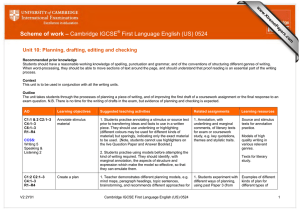
Add this document to collection(s)
You can add this document to your study collection(s)
Add this document to saved
You can add this document to your saved list
Suggest us how to improve StudyLib
(For complaints, use another form )
Input it if you want to receive answer
- Rating Count
- Price (Ascending)
- Price (Descending)
- Most Recent
English igcse
Resource type.
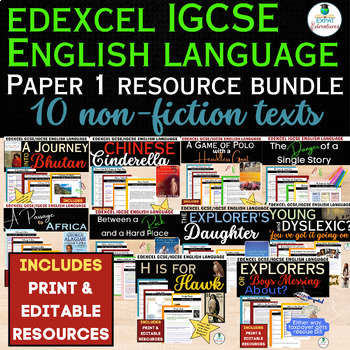
Editable Edexcel IGCSE English Language Paper 1 Resource Bundle

IGCSE Short Stories - for English Literature in 2019 - 2021 + ANSWERS Bundle

CIE IGCSE 0500 English Language Paper 1 and Paper 2 Bundle

Cambridge IGCSE First Language English : Resource Bundle

Pearson Edexcel IGCSE English Language Anthology

CIE 0475 IGCSE English Literature 'A Streetcar Named Desire' SoL
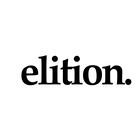
CIE IGCSE 0500 English Language Paper 1 Bundle

CIE IGCSE English Language 0500 Directed Writing Skills
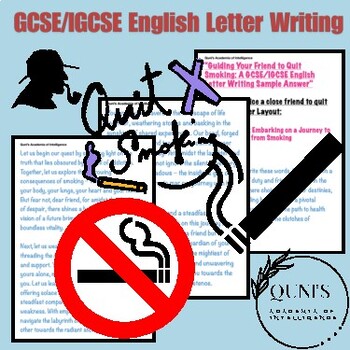

“Guiding Your Friend to Quit Smoking: A GCSE/ IGCSE English Letter Writing Sample

Brew War Comparing & Contrasting the Charm of Coffee and Tea GCSE/ IGCSE English

"Run the World: A Global Running Day Speech for Teenagers" GCSE/ IGCSE English

Analysis of Rudyard Kipling's poem "If" iGCSE English Literature

IGCSE English Literature Sample Answer "Mum, Dad and Me” ~ Analysis of POEM!

IGCSE English Literature: Scout's World in "To Kill a Mockingbird” Analysis!
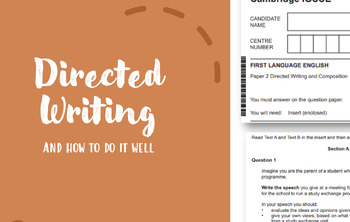
CIE IGCSE English Language Directed Writing Skills

English Language 0500 IGCSE Writer's Effects

CIE IGCSE 0500 English Language Paper 2 Bundle
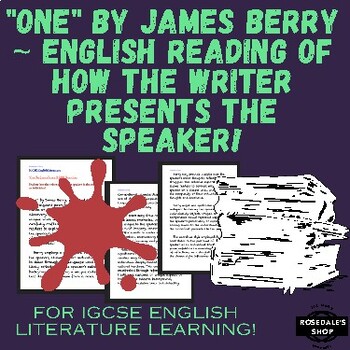
"One" by James Berry - A Critical Companion for IGCSE English Literature Student

IGCSE English Language Edexcel 9-1: Write a letter to your Head Teacher.

iGCSE English Language analysis "Bhutan in the Sky"
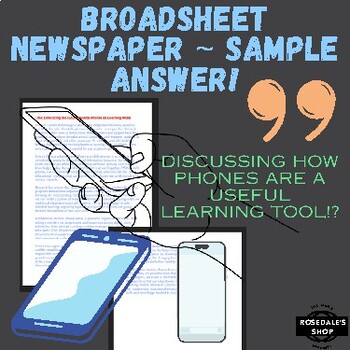
Write an article for a broadsheet Newspaper GCSE / IGCSE English Language ~ ANS
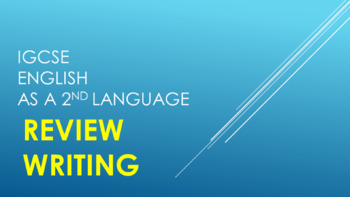
IGCSE English as a Second Language REVIEW WRITING lesson

Edexcel IGCSE English Literature 'Macbeth' Literary Heritage Revision book
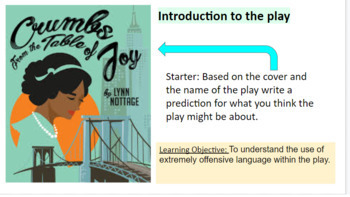
Crumbs from the Table of Joy Unit Scheme of Work IGCSE - English Literature

- We're hiring
- Help & FAQ
- Privacy policy
- Student privacy
- Terms of service
- Tell us what you think
Pardon Our Interruption
As you were browsing something about your browser made us think you were a bot. There are a few reasons this might happen:
- You've disabled JavaScript in your web browser.
- You're a power user moving through this website with super-human speed.
- You've disabled cookies in your web browser.
- A third-party browser plugin, such as Ghostery or NoScript, is preventing JavaScript from running. Additional information is available in this support article .
To regain access, please make sure that cookies and JavaScript are enabled before reloading the page.
Programmes & Qualifications
Cambridge igcse english - first language (0500).
- Syllabus overview
Cambridge IGCSE First Language English is designed for learners whose first language is English. The course enables learners to:
- develop the ability to communicate clearly, accurately and effectively when speaking and writing
- use a wide range of vocabulary, and the correct grammar, spelling and punctuation
- develop a personal style and an awareness of the audience being addressed.
Learners are also encouraged to read widely, both for their own enjoyment and to further their awareness of the ways in which English can be used. Cambridge IGCSE First Language English also develops more general analysis and communication skills such as inference, and the ability to order facts and present opinions effectively.
The syllabus year refers to the year in which the examination will be taken.
- -->2023 Syllabus (PDF, 416KB)
- -->2024 - 2026 Syllabus (PDF, 644KB)
Important notices
Please note that if you make an entry for the A*-G grading scale, it is not then possible to switch to the 9-1 grading scale once the entries deadline has passed. If you find that you have accidentally made an entry for the A*-G syllabus, you must withdraw and re-enter before the entries deadline.
Find out more about our range of English syllabuses to suit every level and ambition.
For some subjects, we publish grade descriptions to help understand the level of performance candidates’ grades represent.
We paused the publication of grade descriptions in response to the Covid-19 pandemic and the temporary changes to the awarding standard in 2020, 2021 and 2022.
As the awarding standard has now returned to the pre-pandemic standard, we are working to produce up-to-date grade descriptions for most of our general qualifications. These will be based on the awarding standards in place from June 2023 onwards.
Check the Submit for Assessment page and the samples database for information and guidance on submitting moderated and examined work using Submit for Assessment.
School Support Hub
Teachers at registered Cambridge schools can unlock over 30 000 teaching and learning resources to help plan and deliver Cambridge programmes and qualifications, including Schemes of work, Example candidate responses, Past papers, Specimen paper answers, as well as digital and multimedia resources.
Schemes of work
Example responses, past papers, specimen paper answers.
Register your interest in becoming a Cambridge School
Stay up to date
Sign up for updates about changes to the syllabuses you teach
- Past papers, examiner reports and specimen papers
- Published resources

COMMENTS
Candidates write all their answers in the space provided on the question paper. Text A and Text B will be 700-750 words in length and Text C will be 500-650 words in length. Candidates should spend approximately 15 minutes reading the texts. The texts will be printed on the question paper insert.
You will take one examination and submit a coursework portfolio of written assignments completed during your course. Paper 1 Reading Component 3 Coursework Portfolio AND The same reading and writing skills will be tested in both options, and you will be able to access the full range of grades for the Cambridge IGCSE (9-1) qualification.
Select three texts from Part 2 of the Pearson Edexcel IGCSE English Anthology. You must choose at least one poetry text and one prose text. Write a response to these texts that covers both AO1 and AO2. Note that this revised format is for first assessment in May/June 2024. 30 marks.
This handbook provides a guide to the coursework option (Component 3 - Coursework Portfolio) in the Cambridge IGCSE First Language English syllabus (for examination from 2020). Its purpose is to give advice and clarification on: • the content of the coursework portfolios • planning and carrying out the work • assessing the coursework
Overview of the Coursework Portfolio - Component 4 The purpose of coursework is to develop your skills. It allows you to: • improve your writing skills • choose topics of a personal interest to you • consider the quality of your work and to edit, revise and correct it independently • take pride in your completed portfolios.
r answers in the space provided on the question paper.Text A and Text B will be 700-750 words. n length and Text C will be 500-650 words in length. Candidates s. d spend approximately 15 minutes reading the texts. he texts will be printed on t.
Component 3 of the English Literature course is the coursework portfolio. The Paper 1 exam is compulsory, but you will then either be sitting a Paper 2 exam or completing the IGCSE by doing a coursework portfolio. In the following guide you will find: An overview of Component 3. A breakdown of Component 3. What skills are being assessed.
There are two components to your Cambridge IGCSE course: 1. A fi nal examination Paper 1 Reading Passages (Core) OR Paper 2 Reading Passages (Extended) 2. A further examination Paper 3 Directed Writing and Composition OR you will submit a Coursework portfolio Component 4
The final mark for the Coursework Portfolio will be out of 50. Assignment 1: informative, analytical and/or argumentative Assignment 2: imaginative, descriptive and/or narrative Assignment 3: a response to a text or texts chosen by the Centre. The text(s) should contain facts, opinions and arguments.
Igcse English Coursework Portfolio - Free download as PDF File (.pdf), Text File (.txt) or read online for free. Scribd is the world's largest social reading and publishing site.
Coursework portfolio | Edexcel IGCSE English Language A Revision Notes 2016 | Save My Exams Created Date: 6/29/2024 11:01:31 AM ...
Assignment 3 of your coursework portfolio is a piece of narrative writing. To reach the highest levels of the mark scheme you are required to create a developed, well-defined plot and include features of fiction writing, such as characterisation and setting. The following guide is broken into the following sections: Overview. Assignment examples.
You will complete up to 8 prep sheets; it is preferable you make 8 to the best of your ability, as this will show the examiners you have a wide variety of skills. You will then do a final piece of work based on 2 of your prep sheets. You do have the option to do two exams, rather than coursework and one exam.
Coursework Handbook 4 Cambridge IGCSE First Language English Introduction This handbook provides a guide to the coursework option (Component 3 - Coursework Portfolio) in the Cambridge IGCSE First Language English syllabus (for examination from 2020). Its purpose is to give advice and clarification on: • the content of the coursework portfolios • planning and carrying out the work ...
This handbook provides a guide to the written elements of the coursework portfolio, Component 5, in the Cambridge IGCSE Literature (English) syllabus (0486). It offers advice and clarifi cation on: the requirements of the portfolio. assessment standards. marking learners' assignments.
Cambridge IGCSE® First Language English | Fully updated, flexible resources taking an active-learning approach that encourages students to aim higher in the 0500, 0524 and 0990 syllabuses. ... deals with directed writing and the third looks at descriptive and narrative composition and includes suggestions for coursework topics if your school ...
The purpose of this handbook. This handbook provides a guide to the coursework option (Component 4) in the Cambridge IGCSE® First. Language English syllabus (Syllabus Codes 0500, 0522 and 0524). Its purpose is to give advice and clarification on: •.
This is a handy, no-prep resource for teachers of IGCSE English as a Second Language, showing students how the same suggested structure can be used to write film, book, restaurant, theatre and event REVIEWS. Ideal for both Year 10 and 11 students writing the new 2019 examinations, this lesson will take 6 lessons to deliver and provides a step-by-step approach, colour-coded mentor texts ...
This guide explains what you need to know about your Cambridge IGCSE Literature in English course and examinations. ... If you are doing Coursework, you will take the following components, which include two exam papers. Note that for Paper 3, ... You submit a portfolio of two assignments, each on a different text. 25% About each paper Component ...
Igcse Coursework Portfolio - Free download as PDF File (.pdf), Text File (.txt) or read online for free. Writing an IGCSE coursework portfolio can be challenging for several reasons: 1) It requires extensive research to gather relevant information and sources to support arguments. This process is time-consuming. 2) It assesses critical thinking and analytical skills through requiring students ...
Component 3 Coursework Portfolio 14 Additional information for Component 3 Coursework Portfolio 16 Component 4 Speaking and Listening Test 23 ... Cambridge IGCSE First Language English also develops more general analysis and communication skills such as inference, and the ability to order facts and present opinions effectively. ...
Writing a coursework, especially for a challenging program like the Cambridge IGCSE, can be a daunting task. It requires a deep understanding of the subject matter, excellent research skills, and the ability to present ideas coherently. The Cambridge IGCSE Coursework Portfolio, in particular, demands a high level of critical thinking, analysis, and creativity.
Syllabus overview. Cambridge IGCSE First Language English is designed for learners whose first language is English. The course enables learners to: develop the ability to communicate clearly, accurately and effectively when speaking and writing. use a wide range of vocabulary, and the correct grammar, spelling and punctuation.